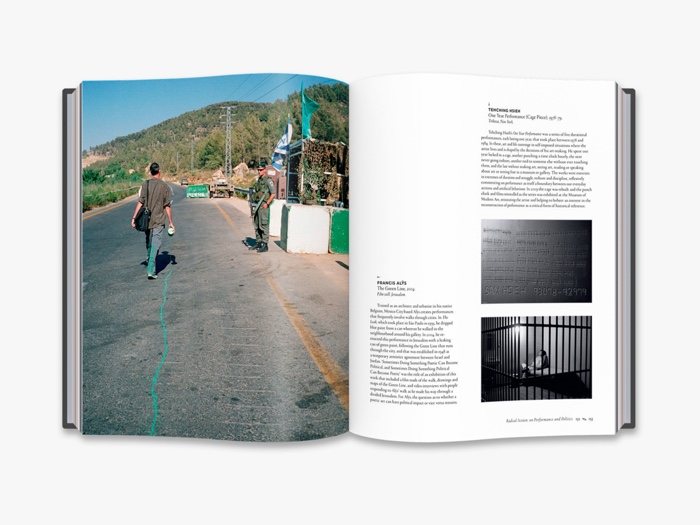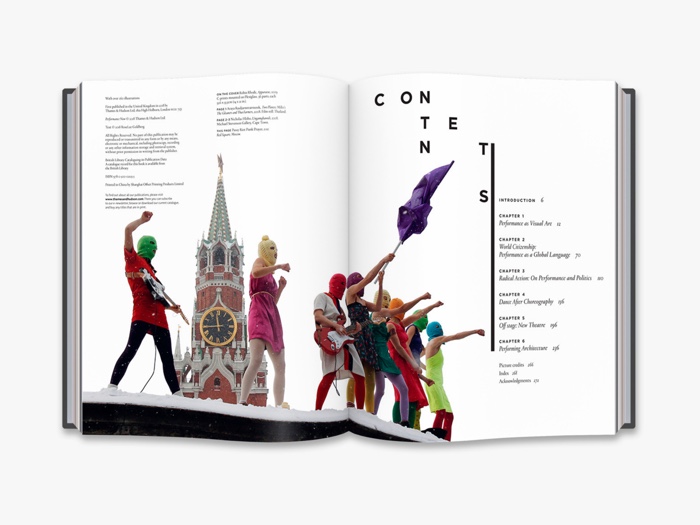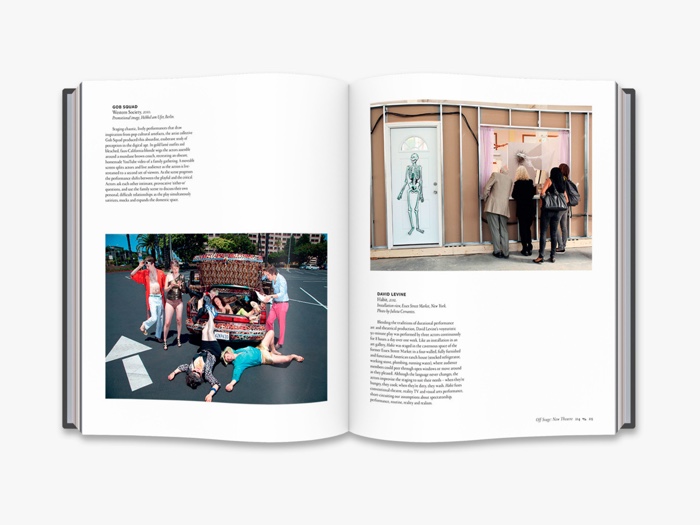Performance Now. Live Art for the 21st Century, by art historian, author, critic and curator of performance art Roselee Goldberg.
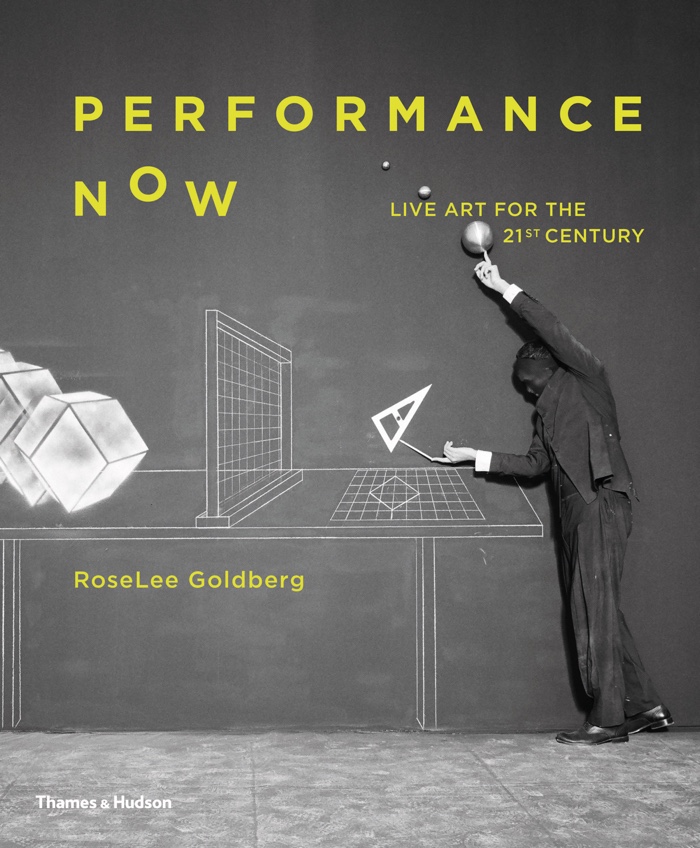
Publisher Thames & Hudson describes the book: Now one of the most highly visible art forms, in the last two decades performance has emerged from the margins to become an essential vehicle for communication, transforming museums and galleries into lively cultural hubs for future generations.
This landmark survey by renowned authority RoseLee Goldberg reveals how live art has developed in the 21st century as a visual medium, a global language and a political force. A mesmerizing survey of this most varied art form, Performance Now is the ultimate reference for artists, art students and historians, as well as theatre, film, dance and architecture enthusiasts with an eye on the avant-garde.
Available on amazon UK and USA.
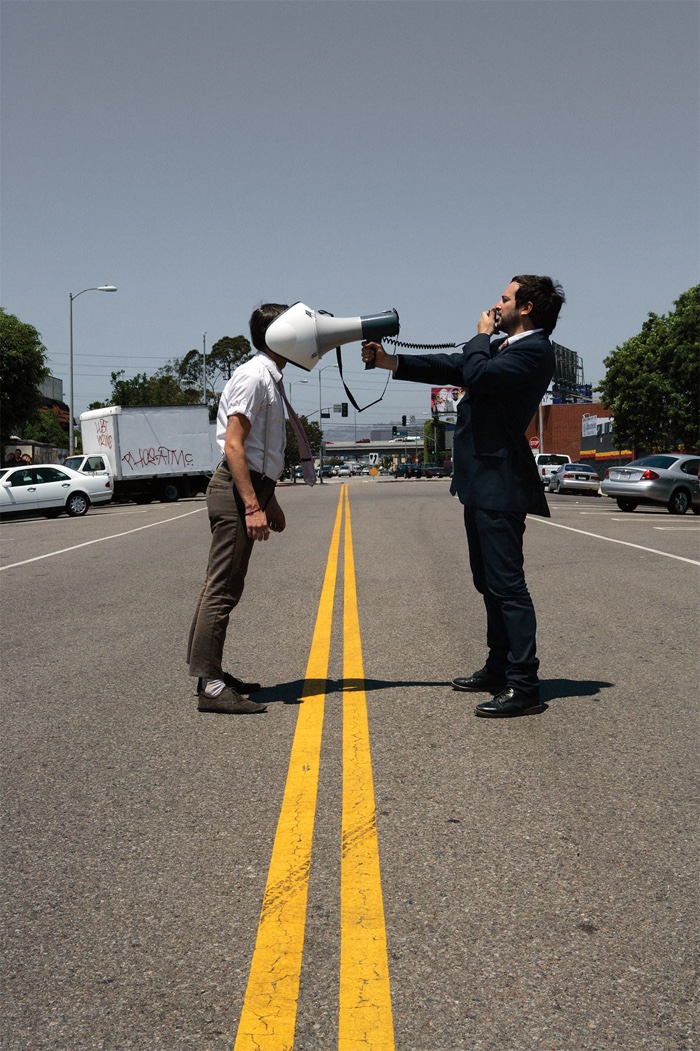
Didier Faustino, Hand Architecture, 2009
I should probably not broadcast it but the first question i ask before i go to a performance is “how long is this going to last?” I detest to be tied to a place for too long. I even check that a movie lasts no longer than 90 minutes before i consider going to the cinema. This book about performances, however, got me hooked.
Goldberg presents an exciting and wide-ranging panorama of performance art from the beginning of this century to now. Her book investigates how performance challenges interactions, communal viewing experiences, artistic codes, how it can convey multiple layers of meaning and how it is documented in images for future study.
Over the past 20 years, performance has gained in visibility in festivals, academia and even in historic museums. Audiences, it seems, like nothing more than a live contemporary perspective. What makes performance particularly compelling though is the way it has started to interplay with disciplines such as dance, architecture and theatre.
In the book, performances are distributed into 6 chapters:
The first one looks at how visual artists integrate performance into their work and what this means in terms of aesthetic qualities, composition and final documentation.
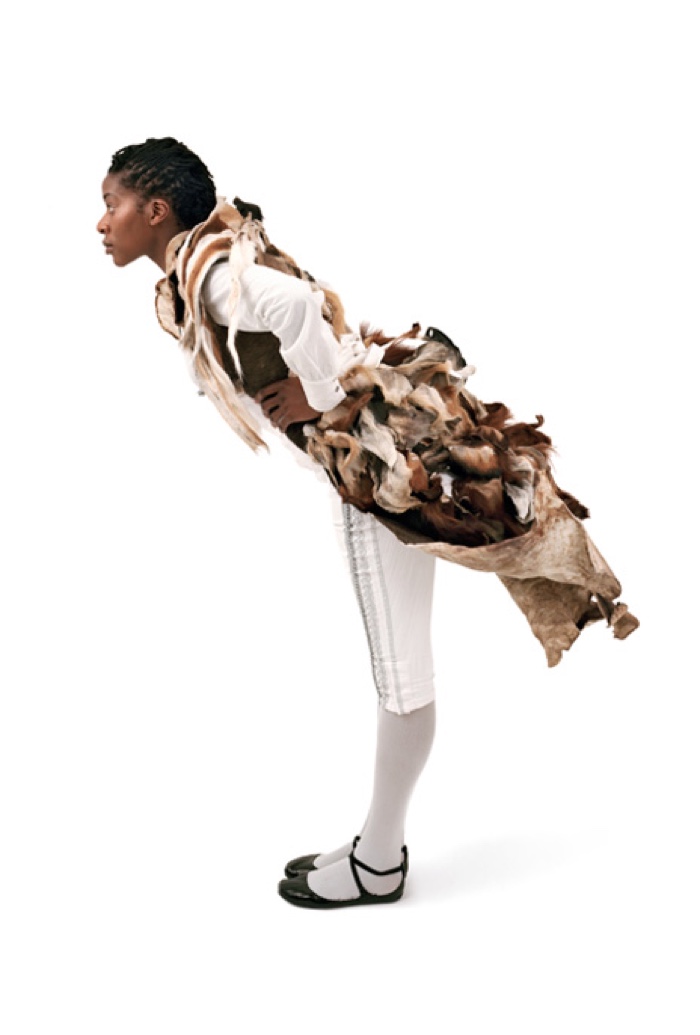
Nandipha Mntambo, Inkunzi Emnyama, 2009
The second chapter, World Citizenship: Performance as a Global Language, explores how artists from countries outside major art centres develop works that manage to transcend their local culture and communicate ideas and sensibilities that find echoes across cultures, languages and social practices.
Terry Adkins, Sacred Order of the Twilight Brothers, 2013
Radical Action: on performance and politics shows artists using the multi-layered nature of performance to record political violence, create aesthetics out of a state of anxiety or simply create poetic spaces for personal visions of an alternative and fairer society.
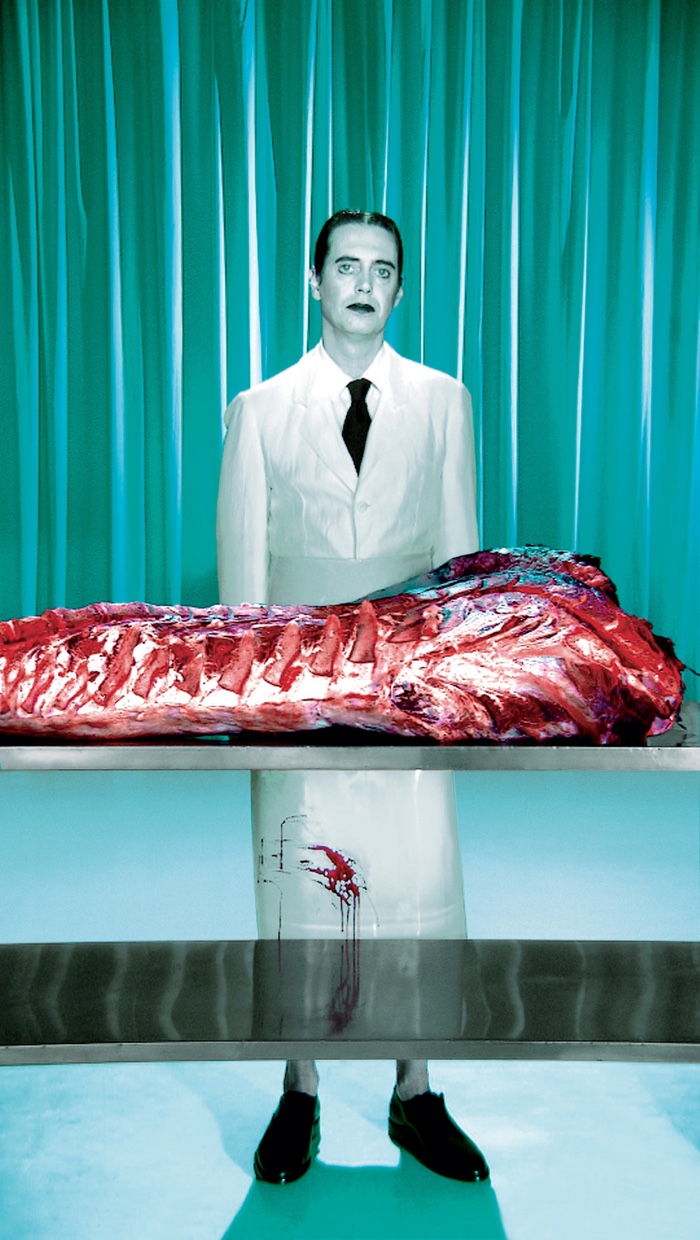
Robert Wilson, Steve Buscemi, Actor, 2004
Nora Chipaumire, Portrait of Myself as My f-a-t-h-e-r, 2016
Dance After Choreography echoes the growing interest of art museums and galleries in staging and shaking contemporary dance.
Chapter 5, Off Stage: New Theatre, investigates the growing interconnections between theatre and performance. On the one hand, artists are increasingly using the stage to engage the audience frontally and/or with spoken words. On the other, theatre artists turn to white cube spaces to deconstruct the elements and traditions of theatre.
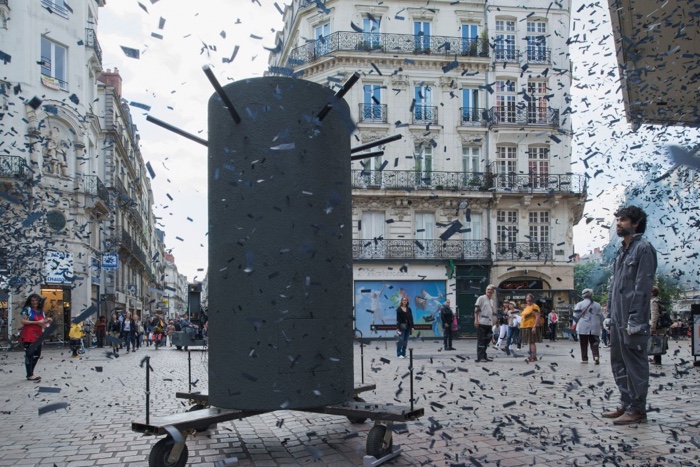
Raumlabor, Monuments, 2013
Finally, Performing Architecture shows the work of architects who often collaborate with artists, choreographers or musicians to produce architectural interventions without the burdens of the profession. They use performance as a playful medium to engage more closely with audience but also as a critical tool for examining the controversies of their own discipline (gentrification, lack of social engagement, etc.) or to respond to urgency with quick solutions to alleviate the despair of people in need of a safe roof over their heads.
The author didn’t mention design but ‘performative design’ has also grown in popularity over these past few years.
Many of the performances discussed in this survey took place in New York city but the author nevertheless covers all continents and introduce us to artists from many cultural and geographical backgrounds. Here are some of the performances i discovered or rediscovered in the book:
Tania Bruguera, Tatlin’s Whisper #5, 2008
The performance set up by Tania Bruguera at Tate Modern consisted of two policemen mounted on horseback submitting visitors to direct crowd control. They corralled people, split them into smaller groups, encircled them and used various techniques to control their movements.
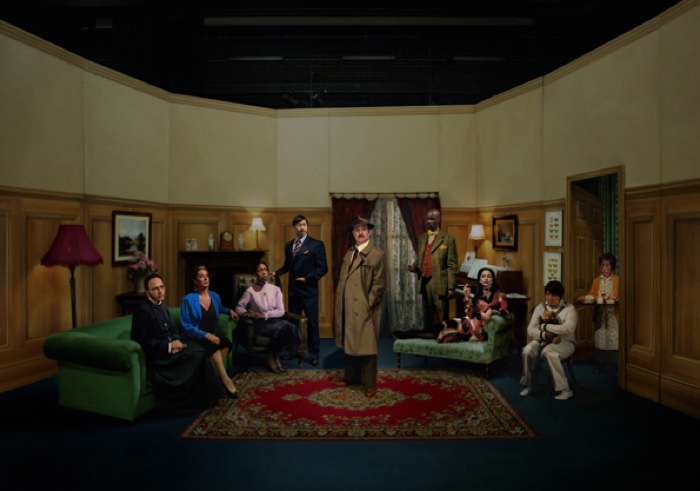
Ming Wong, Whodunnit?, 2004
Whodunnit? was a classic British murder mystery played by a multi-ethnic cast. Ming Wong auditioned actors according to the list of ethnic minority categories found on cultural diversity monitoring forms for Arts Council England funding applications. During the performance, the actors delivered their lines in alternate accents: first in standard British English pronunciation; and then in the imagined foreign accent of their parents’ and grandparents’ generations. The accent functioned as the currency of power, with racialized accents expressing the subject’s relation to the detective.
The identity of the murderer is not the question; the real mystery is, what is the true identity of the individual?
Cory Arcangel, Bruce Springsteen “Born to Run” Glockenspiel Addendum, 2008
Cory Arcangel added even more glockenspiel to Bruce Springsteen’s album “Born to Run”. He made MP3 versions of the songs with his overlayed glockenspiel just audible, hoping his bootleg versions would find their way onto file sharing sites.
Guy Ben-Ner, Stealing Beauty, 2007
Guy Ben-Ner, his wife and children went to IKEA and shot a TV “family sit-com” in the “show rooms” of the furniture giant. Since they did not ask for permission to shoot the scenes in the shops, they had to find a different store-branch each time they got caught and asked to stop what they were doing. The work challenged the ideas of private property and consumption-driven domesticity.
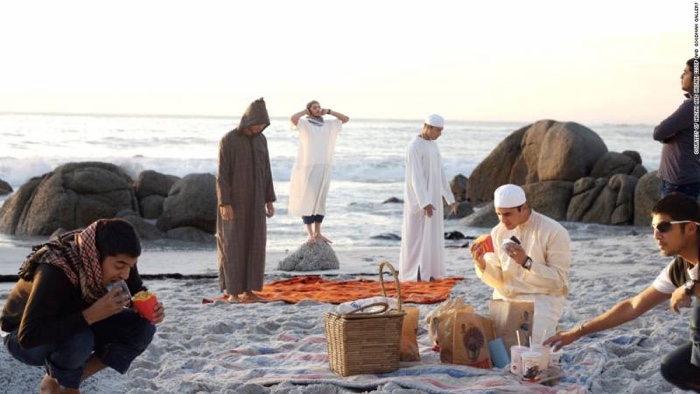
Hasan and Husain Essop, Fast Food, 2008
Hasan and Husain Essop made religious ritual and American-style consumerism, Muslim traditions and secular pop culture clash in Fast Food. In the work, the brothers are breaking the fast during Ramadan with McDonald’s happy meals. Simple and powerful.
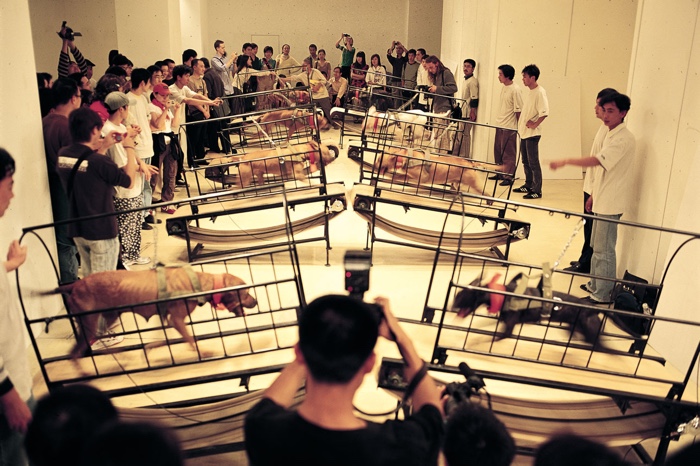
Sun Yuan & Peng Yu, Dogs that Cannot Touch Each Other, 2003. Photo
Pit bulls were escorted by private limousine into an art space in Beijing and strapped on treadmills facing one another. They then exhaust themselves trying to reach, and presumably maul, the other.
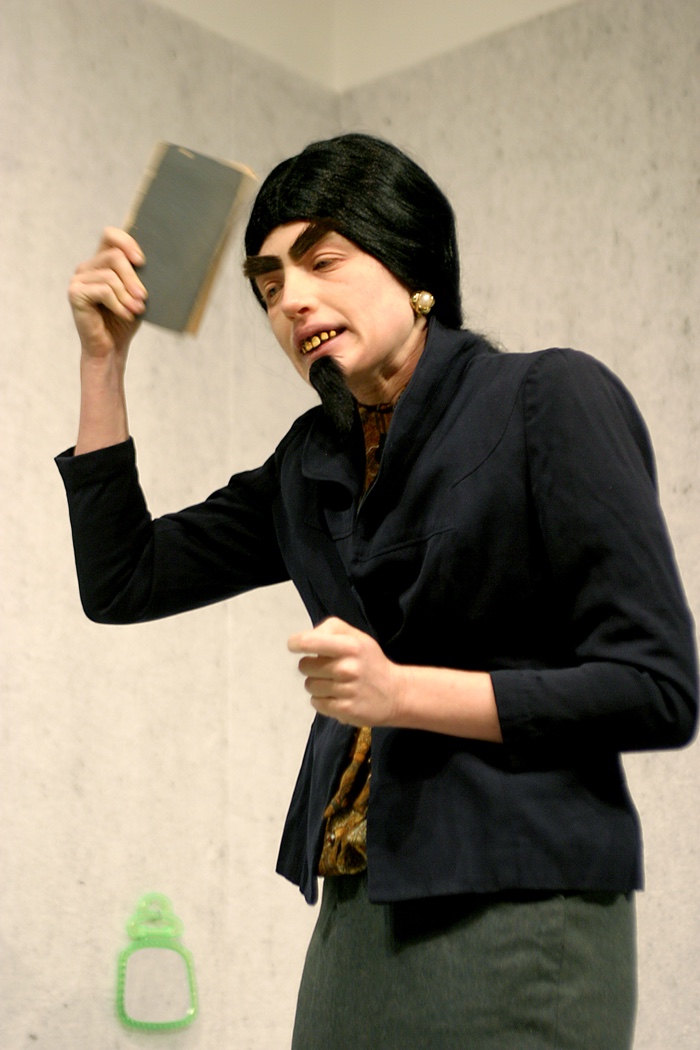
Tamy Ben-Tor, Hip Hop Judensau America, 2007
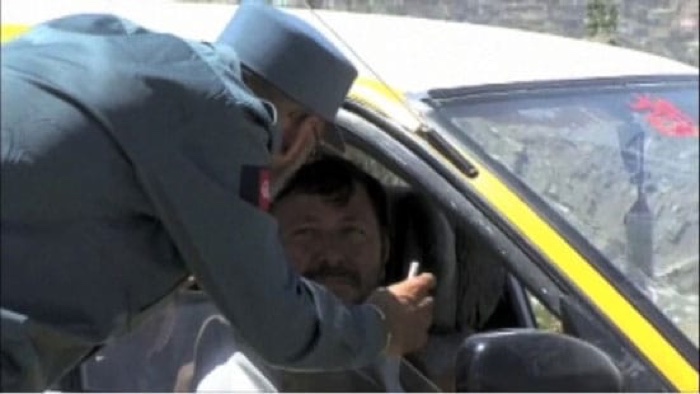
Aman Mojadidi, Payback, 2009. Photo
In Payback, Aman Mojadidi dressed as a police officer, setting up a checkpoint to stop cars. Instead of demanding a payoff, he paid the drivers US$2.00 each – the average price of a police bribe. Some people accepted the money. Others thought it would turn them into a target later. Payback started as a commentary on fraud in the country.
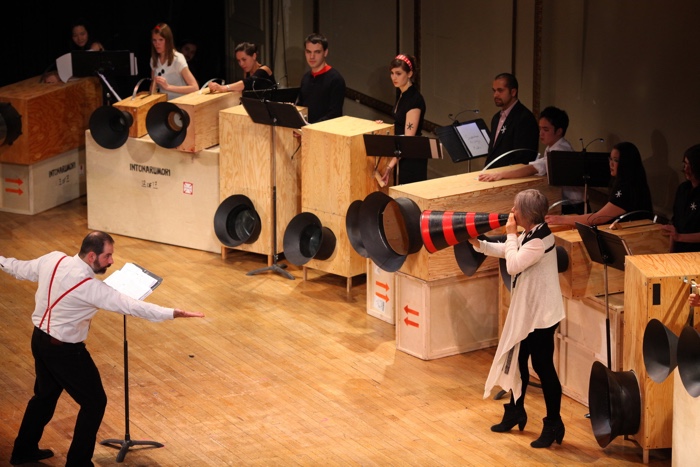
Luciano Chessa, Music for 16 Futurist Noise Intoners, 2009. Photo by Paula Court for Performa
In 2013, Futurist sound artist Luigi Russolo built special hand-cranked instruments to realize an expanded field of orchestral sound. These intonarumori (noise intoners) produced explosions, howls, buzzes, hisses and other noises not usually employed in Western music. Luciano Chessa oversaw the recreation of 16 intonarumori and curated a concert of original and newly commissioned scores.
Alex Schweder & Ward Shelley, Re-Actor House, 2016
ReActor House twirls when the wind blows and tilts on its supporting column. When the two artists in residence move, their weights can throw the home off-balance.
Inside the book:
